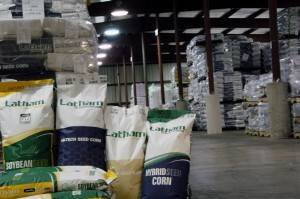 Shrinking grain markets, coupled with climate change, has more farmers than ever talking about risk management. We tend to associate “risk management” with crop insurance or financial portfolios, but there are some well-known ways to manage risk through seed selection.
Shrinking grain markets, coupled with climate change, has more farmers than ever talking about risk management. We tend to associate “risk management” with crop insurance or financial portfolios, but there are some well-known ways to manage risk through seed selection.
Just like managing a stock portfolio, you must determine whether you have an aggressive or a more moderate management style. Selecting all racehorse corn products with the most trait protection might be considered aggressive. A more moderate approach might be selecting very consistent products that have performed year after year but have only the traits you believe are needed on a particular field.
Regardless of your risk management style, here are some ideas to help manage risk through product selection without making an additional cash investment:
- Genetics – The conventional school of thought emphasizes planting several genetically unrelated products that works on your soils. Latham Hi‑Tech Seeds certainly endorses that practice, however, you might also want to consider another option. If you know a particular genetic family works well on your farm, selecting products with some of the same parentage but slightly different characteristics might also be a good fit.
- Maturity – Spreading risk by planting different maturities is nothing new. However, planting products within the same genetic family in various maturities puts a much different twist on this risk management tactic. This stands in contrast to planting completely unrelated products in different maturities.
- Pollination – If you’re concerned about pollination, spread risk by planting different maturities or products with the same maturity but different flowering dates. NOTE: Do not split your planter as that can be detrimental to pollination. Instead, plant these products on one side of a field or in a different field.
- Ear Type – If you have a field that produces great crops but tends to dry out even in years with adequate rainfall, consider planting hybrids that produce a flex ear. A flex ear lets you
decrease the population somewhat and gives you a little more margin for error than a determinate-eared hybrid, which requires higher population for optimum yields.
Talk to your local Latham® representative about other risk management tools, including our signature Seed-2-Soil® program. Seed-2-Soil helps simplify the crop planning and seed selection processes plus maximize overall yield potential. It begins with a discussion with a farmer and his Latham® seed rep about all the variables that go into your farming practices each year. Then a scientific computer program helps fit the right seed to the field.
Research has shown that correct product placement leads to a 3-7% yield improvement. Contact Latham Hi‑Tech Seeds today, and harness the power of Seed-2-Soil and fall soil sampling!
